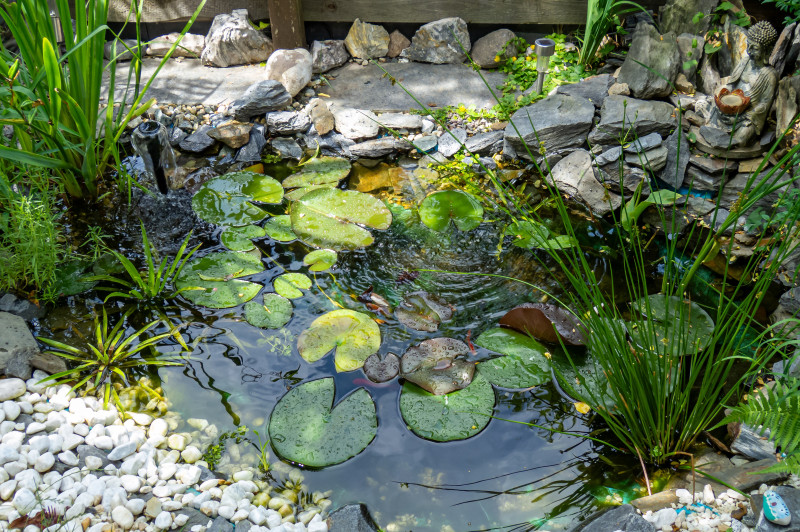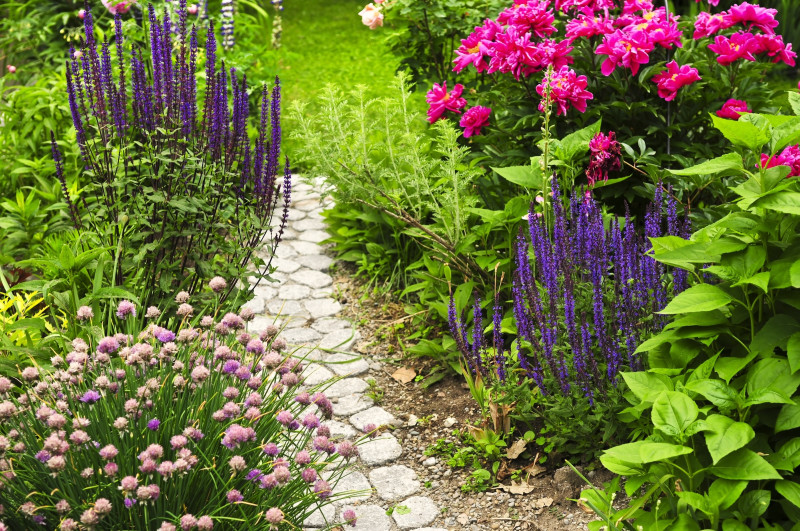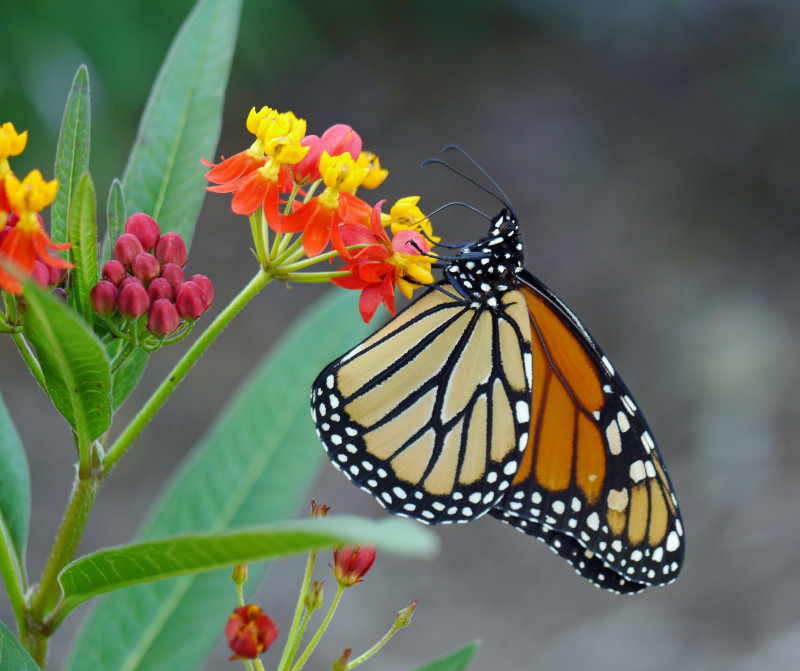Marvel at the wonders of trees. They’re not just vital components of our environment; they’re intricate organisms with a wealth of stories to tell. In this collection of questions and answers, we delve into many of those. Whether you’re curious about the tallest tree in the world, why leaves drop in the fall, the oldest trees, or their value to our planet, you’ll find answers here.
A tree is a slow explosion of a seed. – Bruno Munari, Italian artist
Why trees grow leaves in the spring and shed them in the fall
In spring, the increasing daylight triggers a hormonal response in trees, prompting the growth of new leaves. As temperatures rise and sunlight becomes abundant, trees shift from dormancy to active growth, using stored energy to produce foliage through photosynthesis. In the fall, decreasing daylight and cooler temperatures signal trees to prepare for winter dormancy. As a result, they gradually stop producing new leaves and begin shedding existing ones. It’s a process known as senescence, which conserves energy and resources for survival during the dormant season.
Photosynthesis explained
Photosynthesis is like a tree’s way of making its own food. Just like how we eat to get energy, trees use sunlight, water, and carbon dioxide to make their food. Trees have specialized cells called chloroplasts that contain chlorophyll, a pigment that captures light energy from the sun. When sunlight strikes the chlorophyll molecules, they absorb this energy, which then powers a series of chemical reactions. Inside the chloroplasts, the absorbed sunlight energy is used to split water molecules into oxygen and hydrogen atoms. Oxygen is released into the atmosphere as a byproduct, while the hydrogen atoms are combined with carbon dioxide to form glucose, a simple sugar. The tree uses glucose for energy and to grow.
Deciduous vs. evergreen: there’s a reason
Some trees are deciduous, while others are evergreen because of their evolutionary adaptations to their respective environments. These adaptations are shaped by a combination of factors such as climate, soil conditions, ecological niche, and evolutionary history.
Deciduous trees typically thrive in regions with distinct seasonal changes, particularly in temperate climates where winters are cold and dry. The deciduous strategy of shedding leaves in the fall is an adaptation to conserve water and energy during the dormant winter months. By dropping their leaves, they reduce water loss through transpiration and minimize the risk of damage from freezing temperatures and harsh winter conditions.
On the other hand, evergreen trees are well-suited to environments with milder climates, such as tropical and subtropical regions, and temperate areas with relatively consistent year-round conditions. They’ve evolved to retain their leaves throughout the year. These adaptations include needle-like or leathery leaves with thick cuticles (protective, waterproof coverings) and sunken stomata (pores), which help reduce water loss and withstand harsh environmental conditions. Evergreens continuously replace old leaves with new ones, allowing them to maintain photosynthetic activity and nutrient uptake even during periods of dormancy.
The bigger they are, the longer they live
Trees typically live longer than smaller plants due to several factors. First, their large size and extensive root systems provide stability and access to water and nutrients, which enables them to withstand environmental stresses and compete for resources more effectively. Additionally, they invest energy into durable structures like woody stems and bark, offering protection against physical damage and pathogens over time. Also, many tree species have evolved mechanisms to repair and replace damaged tissues, contributing to their longevity compared to smaller, more fragile plants.
The seed from a “parent” tree will have similar characteristics as it grows
The branching structure of a tree is influenced by both genetic factors and environmental conditions. While the genetic makeup inherited from the parent tree plays a significant role in determining traits such as branching patterns, environmental factors such as sunlight, soil nutrients, and moisture levels also influence growth. Therefore, while a seed from a specific tree may inherit certain genetic characteristics that predispose it to a similar branching structure as its parent, variations in environmental conditions can lead to differences, resulting in some degree of variability in the branching structure of the offspring tree.
Trees “migrate” in their own way
Trees, unlike smaller plants, do not migrate in the traditional sense by physically moving from one location to another. However, they can exhibit a form of migration through seed dispersal mechanisms. Trees produce seeds that are often dispersed by wind, animals, or water, allowing them to colonize new areas. Over generations, this seed dispersal can lead to the establishment of tree populations in new locations, effectively expanding their range. Also, trees can adapt to changing environmental conditions over time through processes like natural selection and genetic variation. That allows them to persist in habitats that may shift due to factors such as climate change.
Why different trees make different sounds in the wind
Different trees produce different sounds primarily because of variations in their physical characteristics, such as the size, shape, and density of their wood. When wind interacts with tree branches and leaves, it sets them into motion, creating vibrations that propagate through the tree’s structure. These vibrations produce sound waves, and the specific frequencies and timbres of the sounds depend on the tree. A tree with dense, stiff branches may produce a higher-pitched sound compared to one with more flexible branches. Factors like leaf shape and density can influence the rustling sound produced.
One tree known for producing very soft sounds when the wind blows through its leaves is the Quaking Aspen, Populus tremuloides. The name “quaking” comes from the distinctive trembling or fluttering motion of the leaves in even the slightest breeze. Its leaves are small, roundish, and attached to flexible flattened stems, which allows them to flutter easily in the wind, creating a delicate, whispering sound. This characteristic sound is often described as gentle and soothing, making the Quaking Aspen a favorite among many for its peaceful presence in forests and landscapes. Another tree well known for its pleasing sound is the cottonwood, Populus spp. Its large, somewhat heart-shaped leaves “rustle.” They also often have a slightly waxy or glossy surface.
By the way, the fluffy, “cottony” stuff produced by a female cottonwood tree, as shown above, are seeds surrounded by fine hairs that aid in their dispersal by wind. When the seeds are released, they’re carried by the wind, often resembling a flurry of cotton in the air. This adaptation helps them to travel long distances and find suitable locations for germination and growth.
Some trees are old…very old
Some trees, like the Bristlecone Pine and the Giant Sequoia, can live for thousands of years, making them among the oldest living organisms on Earth. As of January 2022, the “Methuselah Tree,” a Great Basin Bristlecone Pine, Pinus longaeva, located in the White Mountains of California, holds the title of one of the oldest known individual trees. Methuselah is estimated to be over 4,800 years old. (Its exact location is kept secret to protect it from potential vandalism.)
A clonal tree known as the “Jurupa Oak,” located in Jurupa Valley, California, is 13,000 to 18,000 years old. The local planning commission wants to build a large development that includes retail, a school, 1,700 houses, and light industry only a few hundred feet from the tree. Environmentalists and conservationists oppose the plan, saying it will harm the precious tree. The issue is still up in the air as of July 2024. The Jurupa Oak is a Palmer Oak, Quercus palmeri.
“Pando,” also known as “The Trembling Giant,” is a massive clonal colony of a single quaking aspen, Populus tremuloides, tree. Located in the Fishlake National Forest in south-central Utah, Pando is considered one of the largest and oldest living organisms on Earth, estimated to be at least 80,000 years old. Quaking aspens reproduce asexually through a process called clonal propagation. New stems sprout from the root system of the parent tree, forming genetically identical clones.
Some trees are big…very big
A sequoia tree, the “General Sherman,” Sequoiadendron giganteum, is the largest known living single-stem tree in the world. It’s 275 feet (83.8 m) tall, only 30 feet (9 m) shorter than the Empire State Building, and estimated to be 2,300 to 2,700 years old. A Coast Redwood Tree, Sequoia sempervirens, also in California, is the tallest known living tree in the world. Named “Hyperion,” it measures 379.1 feet (115.55 m) tall. It’s estimated to be 700 to 800 years old.
They provide crucial environmental benefits
Trees play a crucial role in mitigating climate change by absorbing carbon dioxide from the atmosphere and releasing oxygen through photosynthesis. They also provide habitat for countless species of plants and animals. This ecosystem service, known as carbon sequestration, has economic value in terms of avoiding the costs associated with climate change impacts.
Trees can “talk” to each other
Trees can communicate with each other through underground networks of fungi called mycorrhizal networks. This communication network allows trees to share nutrients and water and even warn each other of potential threats like insect attacks through the release of chemicals in their roots. Trees may also release chemical signals in the form of volatile organic compounds (VOCs) into the air.
The diversity of trees
There are over 60,000 different species of trees worldwide, ranging from towering redwoods to the tiny Dwarf Willow, arguably the world’s smallest, which measures about 0.39 to 2.36 inches (1–6 cm) tall. There are more than 870 native tree species in the continental United States and an additional 116 native tree species in Hawaii. The U.S. is also home to numerous non-native tree species that have been introduced for ornamental, forestry, or other purposes.
Medicinal uses
Many trees have medicinal properties, with compounds extracted from their bark, leaves, and sap. They’re used in traditional medicine around the world.
Cultural importance
Trees hold significant cultural and spiritual importance in many societies and have been revered in religious rituals, folklore, and art for millennia. For instance, many Native American cultures use trees such as cedar, pine, and oak in rituals, ceremonies, and healing practices.
Economic impact
Trees provide valuable resources such as timber, fruits, nuts, and latex, contributing to economies worldwide.
A cooling environment
Trees play a crucial role in cooling urban environments.They provide shade and release moisture through transpiration, which helps to mitigate the heat island effect in cities.
Coastal protection
Mangrove trees, found in coastal regions, provide vital protection against storms, erosion, and tsunamis. They act as natural buffers that safeguard coastal communities and ecosystems.
Backyard brush piles protect wildlife
Native shrubs, grasses for wildlife
All those plants in your yard? Surprisingly brainy!
In your yard: 27 birds to look for
Back to front, how to layer plants in your yard










